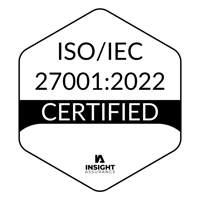
With new laws around minimum wage being debated across the country, along with new regulations around overtime pay under the FSLA, many nonprofits are feeling the budgetary burn and wondering how to cover all of these costs while still supporting programming and staff development. Upping the grant-writing game is a likely solution for most organizations. In fact, according to Grant Station’s Spring 2016 report, “46 percent of respondents applied for more grants” than the year prior. Grant Station also reports that the chances of receiving grant money went up when nonprofits applied for three or more grants.
But the question then becomes: where should nonprofits focus their energies when it comes to grant applications, especially now that one of the biggest barriers to applying for these funds is limited staff time to devote to the project? Grant Station reports, “private foundations, community foundations, and corporations continue to be the most frequently cited sources of grant awards.” That said this becomes tricky when it comes to funding the crucial costs of overheads such as staff compensation and healthcare benefits, which are key components to recruitment and retention efforts – and the sustainability of an organization. But not all funders want to pay for these expenses. According to the Grant Station report “individual donations (37 percent) were the most frequent source of indirect/administrative funding, while foundation grants (13 percent) were the least frequent source.” Most non-government funders want to pay 10 percent or less towards overhead costs.
So how do struggling nonprofits that don’t have a lot of time or resources to focus on grant writing ensure that they are doing the absolute most they can to receive awards that also pay for overhead costs? Below is a brief round-up of articles and blogs that focus on effective strategies to secure funding for operational costs.
- Nonprofit Association of Oregon (NAO) advocates for six strategies to “support the core capacities needed for effective operation and resiliency.”
- Grant Space recommends searching the Foundation Directory Online with the search terms “general support” to find funders who cover operational-related expenses.
- Blogger Vu Lee takes on restricted funding in this blog, presenting seven ways nonprofits can help support a movement towards more unrestricted funding resources
- The Nonprofit Overhead Project from the California Association for Nonprofits provides a toolkit for nonprofits on how to address concerns over a lack of funding for operational expenses. The Real Cost Project also has an extensive list of resources on this topic.
Some organizations look to cut expenses in the face of tightening budgets, and healthcare benefits are often one of the first things on the chopping block; however, nonprofits should pursue grant funding as an alternative - download our guide on The Importance of Healthcare Benefits for Nonprofits to learn more!


.png?width=1501&name=Nonstop_Logo-22-Horizontal%20(2).png)




